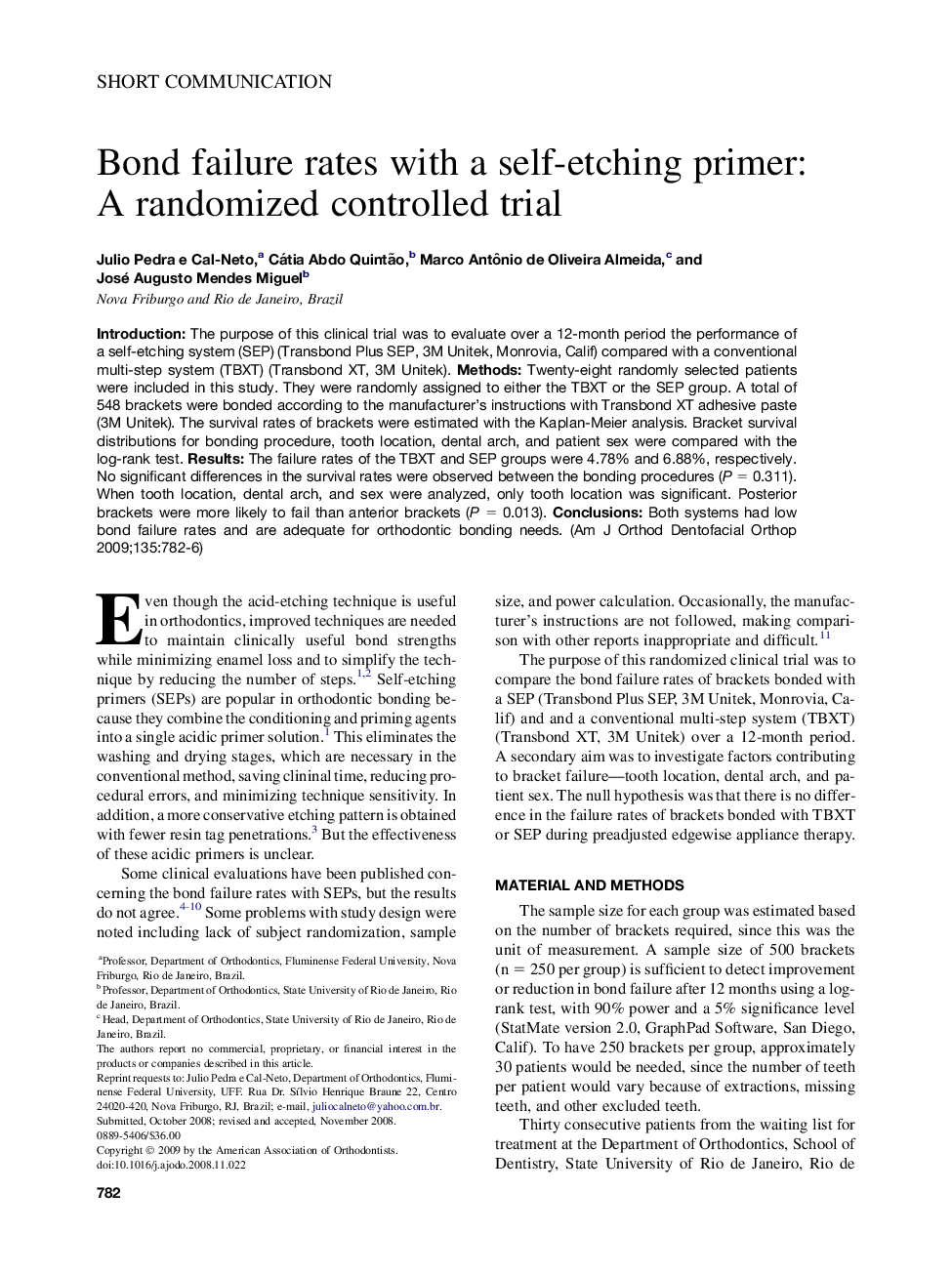| Article ID | Journal | Published Year | Pages | File Type |
|---|---|---|---|---|
| 3118248 | American Journal of Orthodontics and Dentofacial Orthopedics | 2009 | 5 Pages |
IntroductionThe purpose of this clinical trial was to evaluate over a 12-month period the performance of a self-etching system (SEP) (Transbond Plus SEP, 3M Unitek, Monrovia, Calif) compared with a conventional multi-step system (TBXT) (Transbond XT, 3M Unitek).MethodsTwenty-eight randomly selected patients were included in this study. They were randomly assigned to either the TBXT or the SEP group. A total of 548 brackets were bonded according to the manufacturer's instructions with Transbond XT adhesive paste (3M Unitek). The survival rates of brackets were estimated with the Kaplan-Meier analysis. Bracket survival distributions for bonding procedure, tooth location, dental arch, and patient sex were compared with the log-rank test.ResultsThe failure rates of the TBXT and SEP groups were 4.78% and 6.88%, respectively. No significant differences in the survival rates were observed between the bonding procedures (P = 0.311). When tooth location, dental arch, and sex were analyzed, only tooth location was significant. Posterior brackets were more likely to fail than anterior brackets (P = 0.013).ConclusionsBoth systems had low bond failure rates and are adequate for orthodontic bonding needs.
